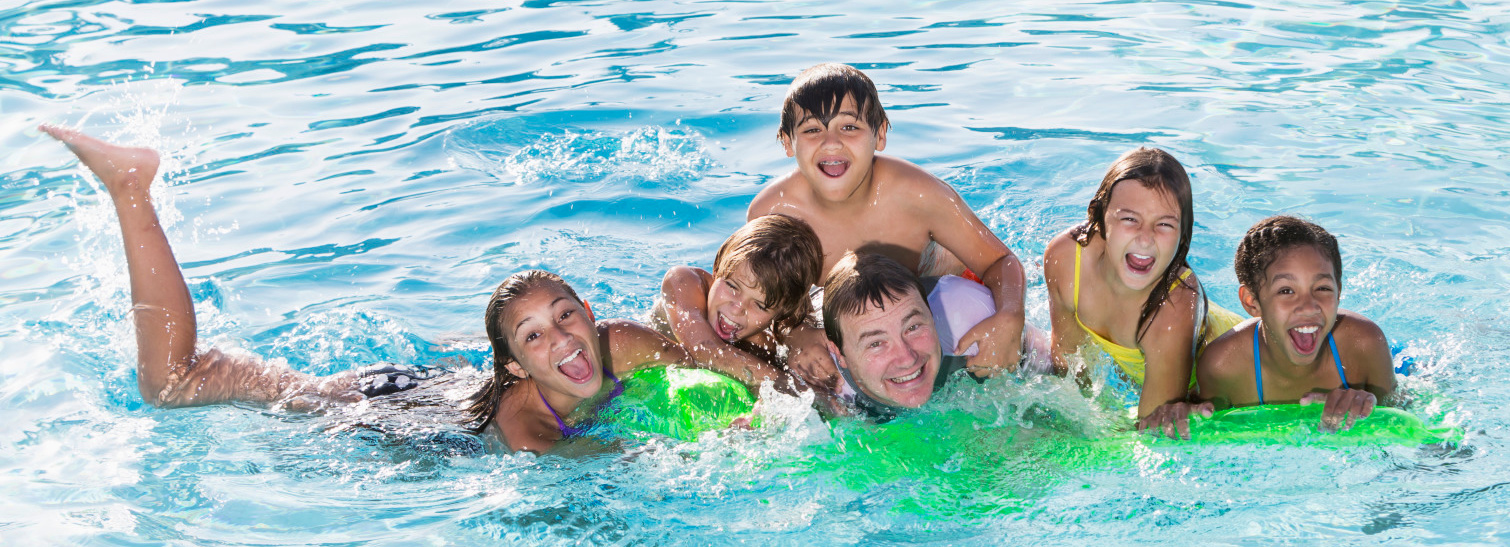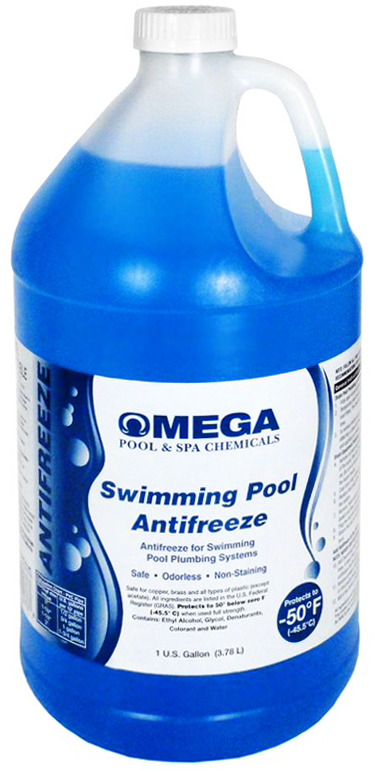Published by Matt Fichera on 08/20/2020
How To Use Swimming Pool Antifreeze
Another pool season is coming to a close and you are starting to think about closing it up for the winter months. After a summer of splashing, lounging, swimming, and relaxing it’s understandable if you are reluctant to get this process started. Winterizing your pool is a necessary task to protect and preserve both your pool and the investment that you have in it. You can call in a professional or you can handle it on your own. Regardless of how you choose to get your pool closed, there’s many different methods to getting it done. What we are covering in this article is how antifreeze comes into play in a pool closing.
Using antifreeze really is only an option if you have an inground pool. You can add it to the pipes to prevent any leftover water from freezing, expanding, and damaging them. If you are going to blow out all of the pool plumbing pipes and are quite confident in doing this, there really isn’t a reason to use antifreeze. It’s only an insurance policy if you have less confidence in being able to get all of the water out of your system or against any faulty plugs that are circulation. If you are choosing to use antifreeze, then it is imperative you make sure to use one that is specifically designed for use in a swimming pool. Pool antifreeze is non-toxic to both animals and people. It is never a good idea to use automotive antifreeze in your swimming pool because it is harmful to living things. Always check the bottle before use to make sure it is non-toxic and designated for use in a pool.
Usually you use one gallon of pool specified antifreeze for every 10 feet of 1.5-inch pipe. This measurement is assuming that the pipe is full of water. If there is no water or you suspect very little water than you can use a great deal less. Once you have lowered your water level to its designated winter level you can pour the antifreeze into the skimmer to protect the skimmer line. You’ll also use to protect the returns and the main drain. An easy way to get antifreeze into these lines is to use a section of garden hose with a funnel so that you can insert the hose from the pump or from a partially disassembled valve.
Do not use antifreeze in your pool equipment as the salts and glycol can react harshly with both the metal and rubber components causing damage to them. Antifreeze also reacts dangerously with chlorine so refrain from adding it to a chlorinator. Don’t add antifreeze to any of your pool equipment. In any cases where a pump may actually sit below water level and you have concerns, you could always remove the pump and store inside.
Directions for antifreeze use in the pool are as follows:
- Make sure to drain all pool plumbing, piping, and valves according to manufacturer’s recommendations. Close all valves and replace plugs.
- Using an air compressor or a shop vac, blow out each return line from where the filter or heater was attached to it. Blow out skimmer line from the plumbing attached to the pump.
- When the lines are free of water, plug the inlets to prevent water from re-entering the plumbing. Always follow the manufacturer’s/builder’s instructions.
- Add antifreeze to the plumbing according to the protection chart.
When you open the pool in the spring, the antifreeze is non-toxic so there’s no draining of equipment or pipes needed before the pool is operational. At E-Z Test Pool Supplies our antifreeze brand of choice is Omega -50F Non-Toxic Pool Line Anti-Freeze with burst protection down to -50 when used at full strength.








